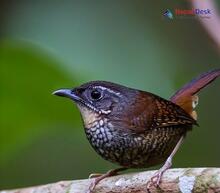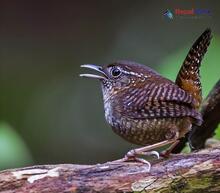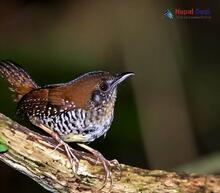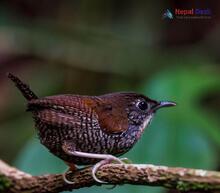Nested within the fascinating avian world lies a unique and lesser-known bird family - the Pnoepyga genus. With their intriguing origin, evolution, taxonomy, and morphology, these elusive little creatures have captivated the attention of ornithologists across the globe. In this article, we dive deep into the enchanting realm of Pnoepyga birds, their ecological significance, and their mysterious presence in the Himalayan nation of Nepal.
Origin and Evolution of Pnoepyga Genus
The Pnoepyga genus belongs to the family Pnoepygidae, under the Passeriformes order. Despite being relatively small in size and having a modest appearance, these birds have a rich evolutionary history spanning millions of years. The exact origin of this genus still remains a subject of scientific debate. However, recent molecular studies have shed some light on their topographical distribution patterns and possible ancestry.
Taxonomy: Classifying Subspecies Within the Genus
Identification and classification of different species within the Pnoepyga genus can be a challenging task due to their distinct yet subtle morphological differences. The genus currently comprises four recognized species worldwide: Pnoepyga pusilla (Pygmy Wren-Babbler), Pnoepyga formosana (Taiwan Wren-Babbler), Pnoepyga albiventer (White-bellied Wren-Babbler), and Pnoepyga mutica (Nepal Cupwing). The last species was discovered in 2014 as a result of systematic molecular studies.
Morphological Features: Distinguishing Characteristics
The not-so-flashy appearance of Pnoepyga birds is often camouflaged by their highly adapted body structure and plumage for living in dense understory vegetation. They possess short wings and tails, strong legs, and a fairly rounded body shape. These morphological adaptations allow them to be nimble and maneuver through the dense undergrowth whilst maintaining their low-profile existence.
Ecology: The Habitat and Behavior of Pnoepyga Birds
The Pnoepyga genus is predominantly found across the eastern Himalayan region, stretching from northern India, Bhutan, Nepal, Myanmar, China, Taiwan, and Vietnam. They inhabit lush subtropical and tropical montane forests with dense vegetation cover. Their preferred habitats include moist broadleaf forests, bamboo thickets, and ravines. Being insectivorous birds, their diet mainly comprises small insects and their larvae. Their elusive nature and preference for dense habitats make them difficult to observe in the wild.
Presence in Nepal: A Special Emphasis on Pnoepyga mutica
The discovery of Pnoepyga mutica (Nepal Cupwing) has added a new dimension to the ornithological diversity of Nepal. This tiny bird has been observed inhabiting mid-hill elevations of central Nepal between 1,000-3,000 meters above sea level. The precise distribution of this species within the country is still being explored by researchers. Intensive fieldwork coupled with molecular studies could reveal more localized populations or even new subspecies within this enigmatic genus.
In conclusion, the Pnoepyga genus and its intriguing attributes have aroused global interest among bird enthusiasts and conservationists alike. A deeper understanding of these birds - their origin, evolution, taxonomy, morphology, and ecology - can significantly contribute to effective conservation strategies in preserving their natural habitat. Moreover, unraveling the mysteries surrounding these captivating creatures can provide valuable insights into the overall biodiversity treasure trove housed by the majestic Himalayan region.




